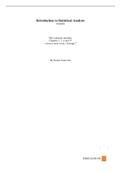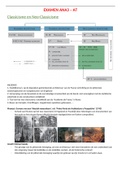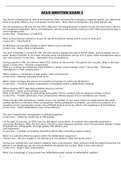Case Study: Wriston Manufacturing Company
Date: 06.11.2023
1. Why do overhead costs (Exhibit 2) vary so greatly from plant to plant in
Wriston’s manufacturing network?
To be able to answer the question, it is first necessary to clarify what is meant by over-
head costs.
There are some examples of overheads such as:
▪ Fixed overheads: rent, interest, administration, depreciation (plants, machines,
logistics – vehicles), insurances
▪ variable overheads: e.g., electricity, water, fuel, operating materials
Below some costs are explained in more detail.
Depreciation (see Exhibit 4): The Detroit plant has a lot of obsolete equipment in oper-
ation. From this it can be concluded that investments are lacking or have been delayed
over the years. Old machines often lead to breakdowns and production backlogs. Repair
times and costs are also increasing. In addition, the energy and resource consumption in-
crease with outdated technologies because they work inefficiently.
Various product categories with variable burden rate
Exhibit 2A shows a comparison of the plants about their individual products. The manu-
facturing plant in Detroit has the highest number of product families (20) and product
models (120). Comparing the number of product families and product models from each
plant shows that Detroit has the highest variable burden rate. This is calculated by divid-
ing the overhead costs by the resulting direct labour costs.
It can be concluded from this that due to the large variety of products, many machines and
tools are also needed. The production of such a variety of goods always causes greater
consumption of resources such as electricity and labour to build new production lines. In
addition, the individual machines must be operated, which requires higher qualifications
and know-how from the individual employees. This allows additional overheads to be de-
rived.
Due to the pressure to perform and poor performance at the Detroit plant, it also has a
negative impact on workers and their morale. So that there is a lot of fluctuation and ab-
senteeism, which in turn causes additional costs.
2. Why have managers in the Heavy Equipment Division under-invested in the De-
troit Plant?
1










